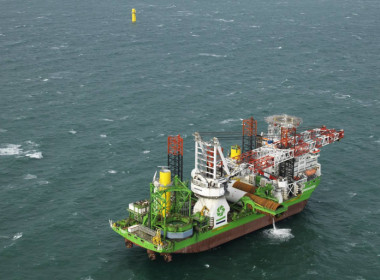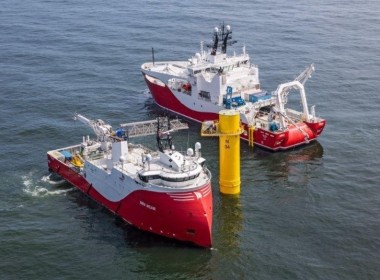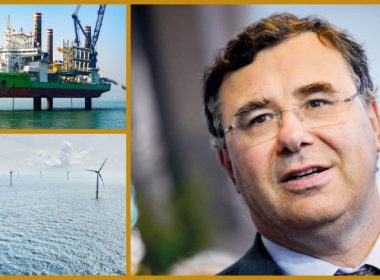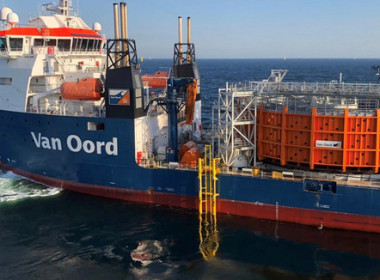COLUMN | Where the wind blows part 1: Borealis, IT Telecoms, TotalEnergies, Ørsted and Vestas [Offshore Accounts]

One of the warmest winters on record seems to be drawing to a close in Europe, and the North Sea spot market is roaring back.
On Friday, the 251 tonnes bollard pull anchor handler Maersk Mariner was spot chartered by Anasuria Operating Company at the princely day rate of £45,000 (US$57,000) for work in the UK sector, coming on the back of fixtures at DKK1 million (US$96,000) per day per vessel in the Norwegian sector for the two large anchor handlers Aurora Sandefjord and Normand Prosper to Wintershall DEA.
Borealis wants to sell down its stake
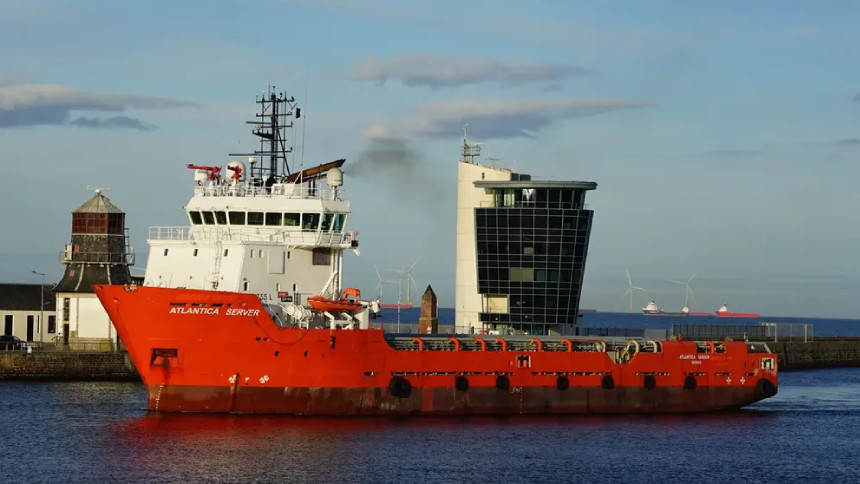
The platform supply vessel (PSV) segment is also showing signs of a seasonal recovery in Aberdeen, with day rates fixing consistently over £10,000 (US$12,600) for supply runs now for the last few weeks, and Atlantica Server fixed on Friday at £12,000 (US$15,100).
As a result of investor interest in the sector, Borealis has launched an ambitious project to sell its PSV Coey Viking (2021-built, DP2-capable, with 980 square metres clear deck capacity and LNG-diesel dual fuel propulsion) to a consortium of investors for US$42.5 million. The vessel is fixed on a long-term time charter with Harbour Energy in the UK sector of the North Sea.
The best news of all for PSV investors was contained in the small print, where Borealis stated that Harbour had waived any right to cancel the charter party for convenience in the first three years. For vessel owners, that disclosure is probably the most bullish signal from the transaction. It sets a very positive precedent that the large oil majors and national oil companies will not like one little bit.
However, the involvement of Cypriot fund Pelagic Partners and its rather “spicy” founders as anchor investors in the deal might deter some, but it is a sign of a switch from their initial windfarm focus back to oil and gas, which is now solidly profitable.
IT Telecom pulls another PSV for good
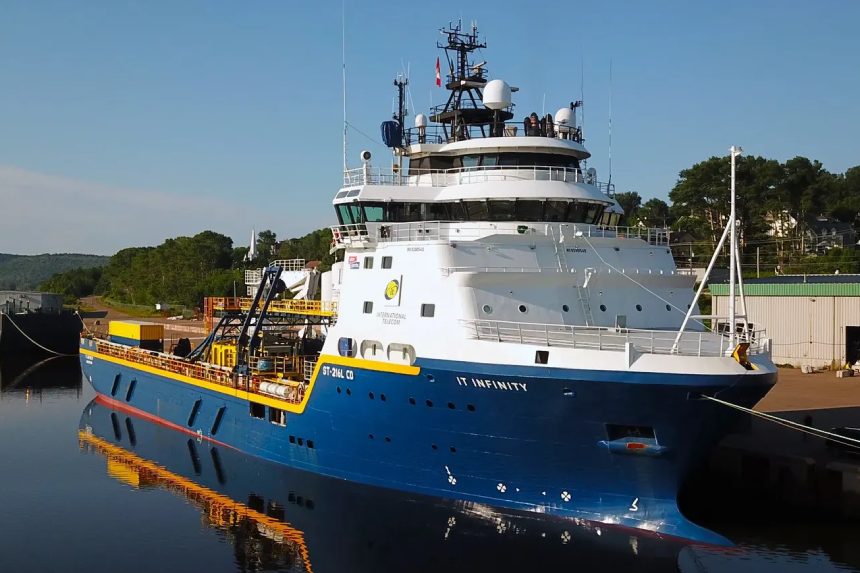
Even as day rates surge and vessel values rebound, IT Telecoms announced that it was converting the 2008-built PSV formerly known as Volstad Princess and then Standard Princess (from 2017) as a cable layer in Brattvaag, Norway. Standard Drilling had sold the vessel to IT Telecom in late 2021 for US$10.3 million (here). It has probably doubled in value these last two and a bit years.
When IT Telecom acquired the DP2, 4,800DWT PSV, it renamed the vessel IT Infinity. So, another PSV exits the offshore segment for cable laying, an area where the fleet is expanding rapidly. The North Sea fleet has shrunk dramatically from 278 PSVs in the North Sea in 2017 to just 178 today. This is both juice to the Borealis story to potential investors in Coey Viking and for future newbuilds. The North Sea PSV fleet continues to both shrink and consolidate, making investment very attractive, but IT Telecom is a cable-laying company and cable-laying is what it will do with IT Infinity.
Whilst we wait for industry leader Tidewater, which owns 37 of the 178 North Sea PSVs and has a fleet age of over 12 years, to report its 2023 full year results (probably next week), we have a raft of wind deals to analyse, and a paradox to address.
The weirdness of wind compared to traditional cycles
The oil and gas industry is highly predictable. When oil prices are high, oil producers make vast profits, as their production costs are largely fixed in the short term, and they invest in further drilling. For example, in the current US$80 per barrel oil price environment, TotalEnergies announced fourth quarter 2023 net income of over US$5 billion. This higher investment and customer cash flow drives up day rates for rig and boat owners, usually with a lag of a few quarters.
We have seen this very clearly between 2020, the nadir of the last cycle, and today. In the second quarter of 2020, to cite an example, TotalEnergies reported a loss of over US$8 billion. Since then, oil demand has recovered and oil and gas prices have increased. Over that four-year period, day rates for deepwater rigs have risen from US$180,000 per day to close to US$500,000, and charter rates for large PSVs internationally have risen from around US$13,000 per day to over $30,000 per day.
Robert Robotti made a ten-fold return on Tidewater
Higher day rates and utilisation means that rig and boat owners then make increased profits. From March 2020 to February 2024, Tidewater’s stock price has appreciated ten-fold from below US$7 to just under US$70, making great returns for its largest shareholder Robert Robotti.
New rigs and vessels take two years or more to build, so any significant rise in activity is rarely matched by an equal rise in the supply of rigs and boats in the short term, although units are returned to service from lay-up, gradually in the recovery phase of the cycle.
The converse is also true. When the oil price drops, the oil companies make lower profits, they reduce their investment in drilling, and demand for vessels and rigs falls. This leads to day rates falling, and to lower profits for the service companies, as was vividly illustrated in 2014 when the industry entered a prolonged downturn when oil prices fell from over US$100 per barrel to US$40 a year later. This cycle has existed for as long as the offshore oil and gas industry has existed and sees regular cycles of investment and scrapping, share price surges, and then earnings declines. The cycles are longer for offshore, but similar cycles exist in other shipping segments. These cycles are easy to understand, even if their timing catches out both investors and shipowners over and over.
The second column I wrote for Baird Maritime way back in 2015 was entitled “Here come the tumbrils,” reflecting on the predictable impact of the downturn.
Wind is new and different
Offshore wind is a new industry with rapid growth and certain paradoxes appear to be coming into play. How the cycle will work there is not clear. Electricity prices for offshore wind farms are largely fixed in advance, with an inflationary element on top and many customers pay tariffs that are fixed annually rather than responding to fluctuations in the spot price, unlike petrol and diesel prices, which vary every day at the station forecourt. Even if electricity prices soar, many offtake agreements prevent windfarm operators from deviating from their long-term, fixed price contracts.
Electricity is sold at a local and regional level immediately, whereas oil and gas are traded internationally, and cargoes can be diverted from, say, Bangladesh to Spain if the Spanish are willing to pay more. Also, oil can be stored until prices rise later, to the great delight of tanker owners who are paid to sit idle with full tanks for months by traders waiting for their bets to pay off.
The wind business and the oil and gas business are not so alike, even as BP, Shell, TotalEnergies, ENI and Equinor pile in to invest in offshore windfarms and other renewables.
Higher, sooner, and for longer
We have long argued that electricity prices will have to rise as demand for electricity increases, driven by demand for electric vehicles, and that returns on capital may disappoint as governments try to minimise these cost increases for consumers.
This tug of war between producers and consumers and the likely upward price pressure for electricity are now widely accepted within the industry.
“We think that fundamentally this energy transition will mean a higher price of energy,” TotalEnergies CEO Patrick Pouyanné told the Financial Times last week. In an interview with Sarah White and Tom Wilson, he criticised the idea that electricity prices would fall due to the widespread adoption of renewables:
“I know that there is a theory that says renewables are cheaper, so it will be a lower price. We don’t think so because a system where you [have] more renewable intermittency is less efficient… so, we think it’s an interesting field to invest in.”
Around one third of TotalEnergies’ capital expenditure is now spent on low-carbon integrated power, driven by the expectation that electricity prices – and margins for generators – will rise.
Mads is mad about prices, too
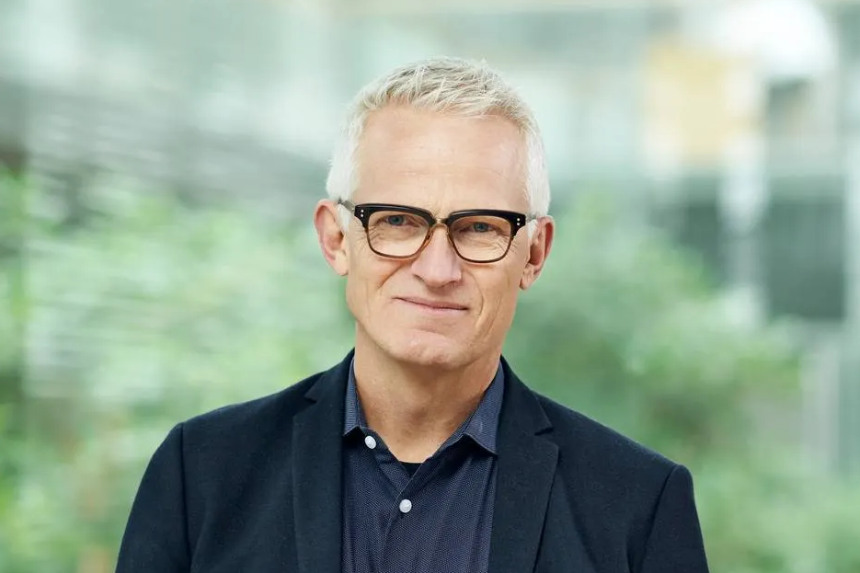
It is not just the boss of TotalEnergies who that feels electricity needs to cost more. The next day, the Financial Times also interviewed the CEO of Danish windfarm developer Ørsted, Mads Nipper, who had recently fired his CFO and COO after the company reported a US$4 billion impairment. The company’s chairman is also stepping down after a decade in the role, but, miraculously, Mr Nipper himself has decided he deserves to stay on running the company.
The buck clearly doesn’t stop with the CEO in Ørsted, and I don’t think any business school will be inviting him to speak on his “servant leader” style any time soon.
But Mr Nipper reaffirmed M. Pouyanné’s message. He told the newspaper that the offshore wind sector’s growth would slow down “dramatically” unless windfarm developers like Ørsted received higher prices for the electricity they generated. He admitted that rising costs were killing his firm’s margins and driving down returns. The key quote was his comment below:
“The fuel of renewable energy is capital. Financing £8.5 billion (US$10.7 billion) — 25 basis points matter and 100 matter a whole lot more. For a company like ours — if interest rates go up by three per cent, that more than eliminates all the profit of a huge investment.”
Fortunately for Mr Nipper, governments and regulators in both the USA and in Europe have increased the base prices for electricity at which they are prepared to offer contracts to new offshore wind farms. This should provide better financial support for new projects, but at the expense of consumers.
Taiwan’s standoff – higher prices or no new projects?
The problem is also seen in Asia, too, where the latest round of offshore projects has seen windfarm developers demanding prices as high as NT$5,500 per MWh (US$180 per MWh), which is significantly more than the current power prices of NT$3,100 per MWh prevalent in Taiwan, Recharge reported earlier this month.
As a result, the developers of new offshore wind projects there are struggling to sign the offtake contracts to sell their electricity, as their price needs and those of the Taiwanese power companies that purchase the output are simply not aligned. Again, something has to give – either lower capital returns for the operators, a price or efficiency squeeze to reduce their costs, or higher prices for Taiwanese consumers.
Them again – still bleeding
The three largest Western providers of offshore wind turbines are in even worse shape than their customers who own and operate the offshore wind farms. Reuters reported that Siemens Energy expects another loss in 2024, even before another one-off charge of around €2 billion (US$2.2 billion) at its troubled turbine manufacturing subsidiary, Siemens Gamesa.
The CEO of Danish turbine maker Vestas, Henrik Andersen, told Reuters that he needed higher prices for his blades and that his company was working closely with developers and governments to ensure “a fair split” of the proceeds of new projects.
“We love our clients…but none of our shareholders wants us to hand out free gifts,” said Mr Andersen.
“You see the terms and conditions of the projects being too difficult for investors and project developers to take. So, we are in a standstill,” Danny van Doesburg, senior portfolio manager at Dutch APG Asset Management, a shareholder in various turbine makers and windfarm operators, was meanwhile quoted as saying.
The paradox of growth without profit
Thus, there are divergent forces at work here – offshore wind is clearly a fast-growing market that may slow down sharply unless the economics of the projects can be resolved; the industry accepts that electricity prices need to rise, but governments are reluctant to hand out blank cheques to project owners; operators like Ørsted seem to have grossly underestimated both their cost of borrowing and the cost of actually building their new wind farms; the big western turbine suppliers seem to have grossly underestimated the cost of actually manufacturing and commissioning their products, their Chinese competitors are all state owned and don’t seem to care.
Throw in the fact that companies like Saipem and Sapura have also underestimated the cost and risk of installing offshore wind turbines (See our piece from 2022 “Nothing’s right I’m torn.”), and we have a very mixed picture.
Despite this mixed outlook, asset owners are progressing on a frenzy of investment in new ships to service the sector. The customers are losing money, but unlike in oil and gas, the shipowners seem not to be impacted–yet.
A huge frenzy of orders is underway, and a huge accumulation of debt has begun. Whereas offshore oil and gas companies are at the point in the cycle where they throw off cash and pay down their debts, windfarm ship owners are entering the most capital intensive and dangerous phase of the industry cycle. Banks that were burned lending to PSV and anchor handling owners in the great downturn are now clamouring to lend to green wind and renewables projects.
We will look in more depth at who is investing as well as some of the structural challenges next week in Part Two.


